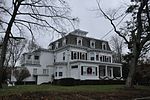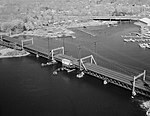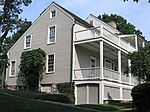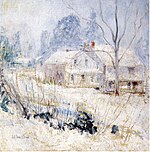Mianus River Bridge
1958 establishments in Connecticut1983 disasters in the United StatesBridge disasters caused by maintenance errorBridge disasters in the United StatesBridges completed in 1958 ... and 10 more
Bridges in Fairfield County, ConnecticutBridges on the Interstate Highway SystemBuildings and structures in Greenwich, ConnecticutDisasters in ConnecticutFormer toll bridges in ConnecticutGirder bridges in the United StatesInterstate 95Road bridges in ConnecticutTransportation disasters in ConnecticutUse mdy dates from March 2018
The Mianus River Bridge is a span that carries Interstate 95 (Connecticut Turnpike) over the Mianus River, between Cos Cob and Riverside, Connecticut. It is the second bridge on the site. The original bridge collapsed in 1983, killing three motorists. The replacement span is officially named the Michael L. Morano Bridge, after a state senator Michael L. Morano who represented Greenwich.
Excerpt from the Wikipedia article Mianus River Bridge (License: CC BY-SA 3.0, Authors).Mianus River Bridge
Pierce Road,
Geographical coordinates (GPS) Address External links Nearby Places Show on map
Geographical coordinates (GPS)
| Latitude | Longitude |
|---|---|
| N 41.036666666667 ° | E -73.591944444444 ° |
Address
Michael L. Morano Bridge
Pierce Road
06876
Connecticut, United States
Open on Google Maps










